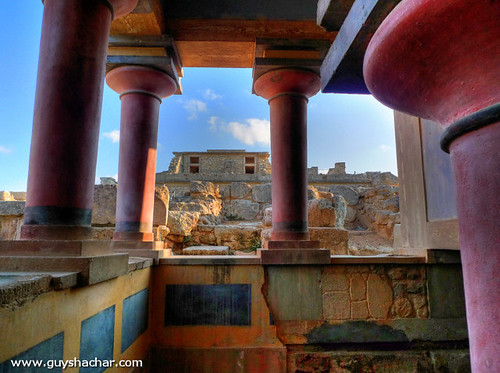 I was asked to gather a heap of data for our timeline-testing, and figured King Tut would make the most interesting case. Why?His history is one that contains a combination of ‘estimates’, undecided parentage and debated dates – and causes of death, as a matter of fact – with very few exact facts and dates for the era in which Carter and Carnarvon dug him out. The ‘split’ makes it a good test-case as well. There’s a huge gap between (circa) 1350BCand 1922 during which Pharaoh Tutankhamun was more or less left in peace. Tut’s tomb did not get robbed because the tombs on top of KV62 collapsed (Ramesses VI, as explained in this video by Dr Hawass), saveguarding the Boy King’s burial site until Carter and Carnarvon arrived in Egypt.
I was asked to gather a heap of data for our timeline-testing, and figured King Tut would make the most interesting case. Why?His history is one that contains a combination of ‘estimates’, undecided parentage and debated dates – and causes of death, as a matter of fact – with very few exact facts and dates for the era in which Carter and Carnarvon dug him out. The ‘split’ makes it a good test-case as well. There’s a huge gap between (circa) 1350BCand 1922 during which Pharaoh Tutankhamun was more or less left in peace. Tut’s tomb did not get robbed because the tombs on top of KV62 collapsed (Ramesses VI, as explained in this video by Dr Hawass), saveguarding the Boy King’s burial site until Carter and Carnarvon arrived in Egypt.
Actually, if it were left to Theodore Davis – who discovered KV54, which later would be recorded as Tut’s funerary cache – Tut would still be deep in the sand. On discovering KV54 in 1912, he declared that he had found Tutankhamun’s tomb and that nothing else was to be found in the Valley of the Kings. With his discovery of KV62 in 1922, Howard Carter proved Davis wrong. In 2005, tomb KV63 was located, proving that the Valley still held some secrets.
I’ve supplied all of the above data (and more), but still, it wasn’t enough – I needed some contemporaneous data, for testing purposes. After further digging, these were my favourite ‘discoveries’ of data (more or less) concurrent with the era of King Tut:
- The burial of the Egtved Girl in Denmark in 1370BC. She was a Nordic Bronze Age girl whose well-preserved remains were found in a barrow. The oak log that she was buried in is dated to the summer of 1370 BC. She must have been 16 to 18 years old when she died, and was a slim, 160cm tall girl with long blond hair and well-trimmed nails. At her feet were the cremated remains of a 5 year-old child. Meet her in this video.
- The end of Minoan culture. The 15th century BC saw the end of the Minoan culture, with most of the Minoan palaces abandoned. The Palace of Knossos, however, remained in use until it was destroyed by fire in 1375 (Minoan works of Art can be found at the Hyksos capital Avaris, Egypt).
- Linear B, a syllabic script that was used for writing Mycenaean Greek, was in use around Tut’s time. The fire which destroyed Knossos baked the Linear Bclay tablets hard and this disaster preserved many of the tablets. It would take the Phoenicians another (more or less) 300 years to develop their alphabet, which eventually evolved into the Greek alphabet and the one I’m using for this blogpost. 😉
- The birth of cremation. While the Egyptians were entombing their pharaohs in elaborate rituals, here in Europe, we gave up on burying the dead, and, apart from the odd accidental bog-mummy, cremation became the norm. Then, as now, the Brits were reluctant to give up the practice of burying their dead, and never fully converted to cremation.
- The man with the golden mask (no, not that one). About a hundred years after King Tut’s death, Agamemnon ruled Mycenae as King. But ‘his’ mask was made 400 years before that.
- The female Cladh Hallan mummy in Scotland. She died circa 1300BC, and about two days later her body was placed in a bog, and left there for about 6 to 18 months, et voila… a mummy (and one of the only examples of deliberate mummification carried out in ancient times ever found in Britain). Three centuries later, she was re-buried with a 600-year-old male mummy for company.
VIDEO: The Egtved Girl
Curator Flemming Kaul of the National Museum of Denmark introduces us to the Egved Girl.
Meanwhile, there wasn’t much going on at Stonehenge. Although it was probably still in (some kind of) use, the latest construction at the stone circle dates about 250 years before King Tut’s death.
At least, by that time, in Europe, we had started mastering horse-drawn chariots, got the hang of constructing hill forts and developed the first ploughs. But we would have to wait another 100 years for serious action and the start of the Trojan War.
I’m pretty sure I’ll get a request for even more data, so for (non-spoof) events worth mentioning that took place between 1500 and 1200 BCare more than welcome! (I’ll trade you Ancient World in London points for those – I trust splendid – suggestions. You’ll get 10 out of my stash of 429 for each correct answer!)
Deadline: Monday morning.